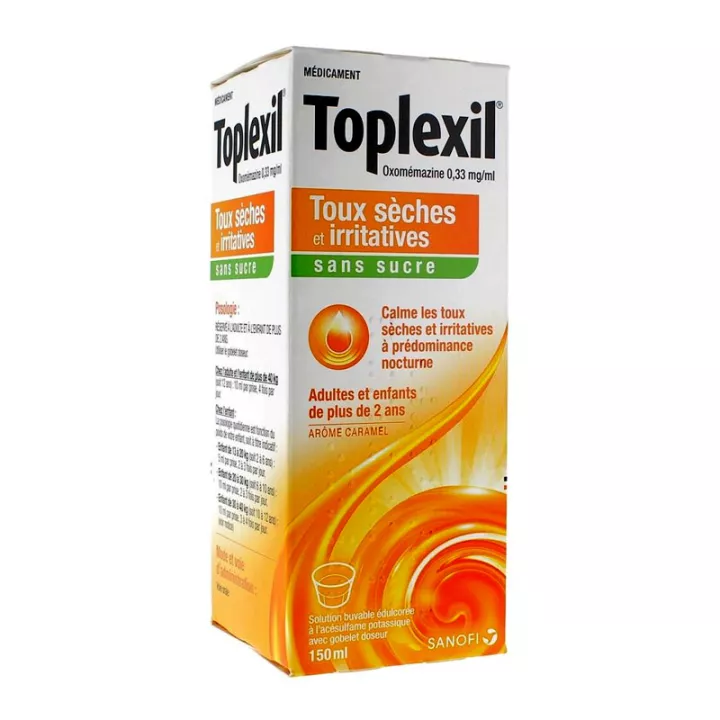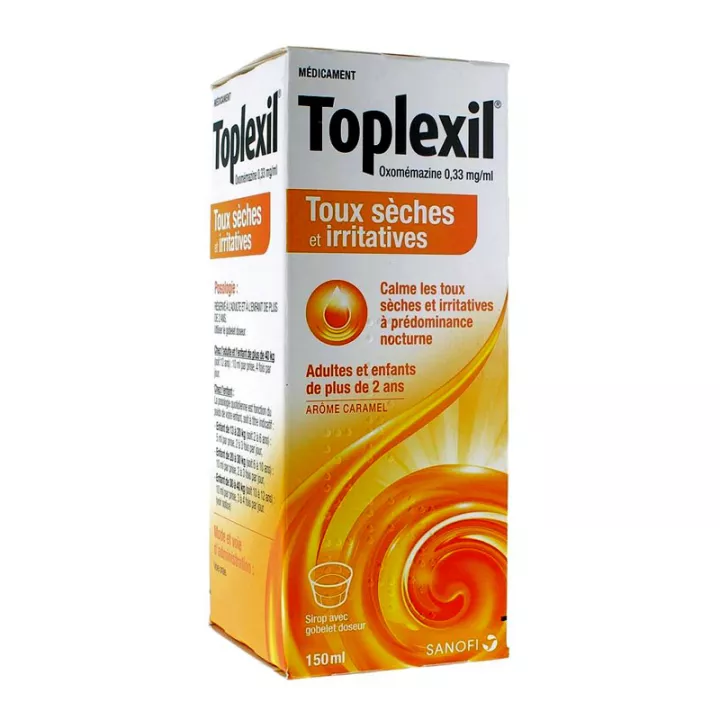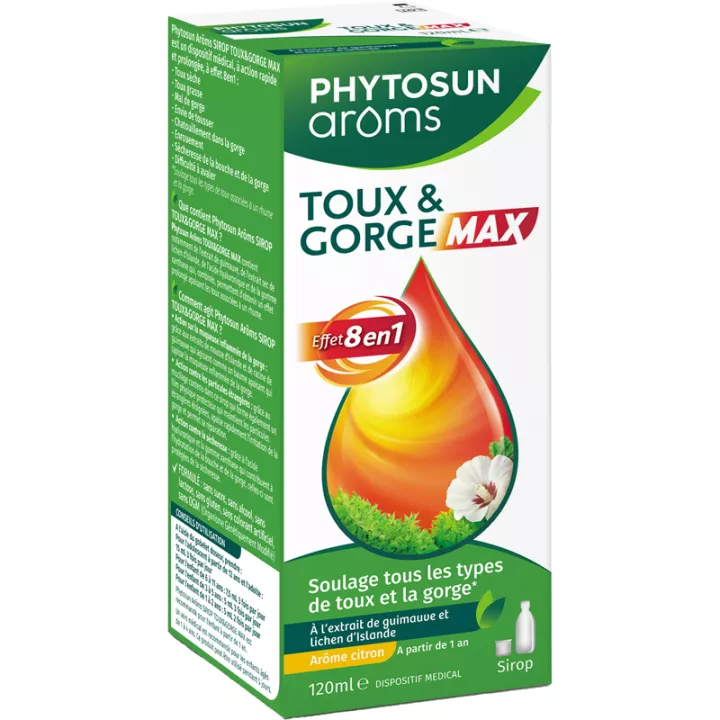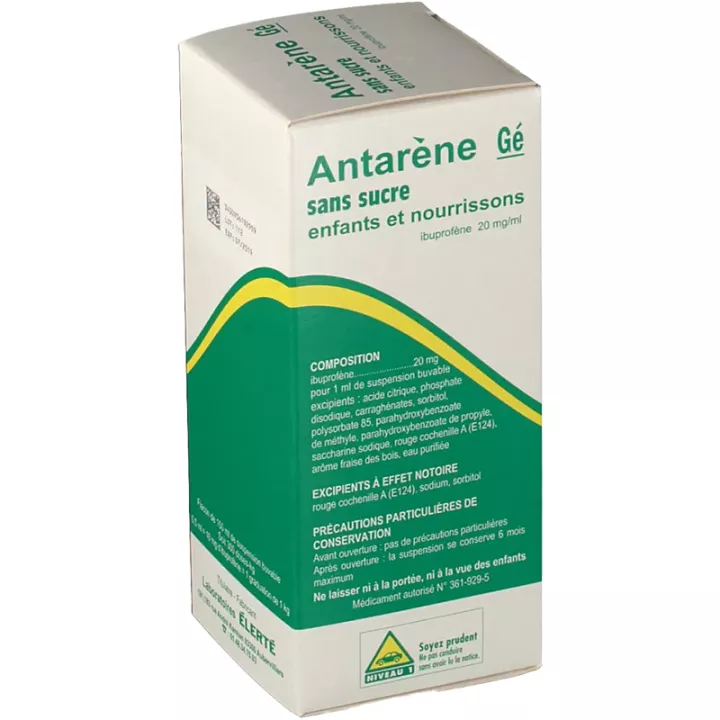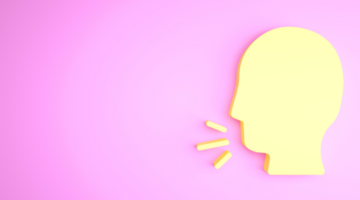NOTICE
ANSM - Last updated: 17/03/2017
Name of the medicinal product
TOPLEXIL 0.33 mg / ml, WITHOUT SUGAR, drinkable solution sweetened with acesulfame potassium.
oxomemazine
framed
Please read this leaflet carefully before you start taking this medicine because it contains important information for you.
You should always take this medicine by following the instructions in this leaflet or by your doctor or pharmacist.
· Keep this leaflet. You might need to read it again.
· Ask your pharmacist for advice or information.
· If you experience any of the side effects, talk to your doctor, or your pharmacist. This also applies to any side effects not mentioned in this leaflet. See section 4.
· You should contact your doctor if you experience no improvement or feel less well after a few days.
Do not use this medication for children.
What is in this leaflet?
1. What is TOPLEXIL 0.33 mg / ml, NO SUGAR, oral solution sweetened with acesulfame potassium and in which cases it is used?
2. What should be known before taking TOPLEXIL 0.33 mg / ml, WITHOUT SUGAR, drinkable solution sweetened with acesulfame potassium. ?
3. How to take TOPLEXIL 0.33 mg / ml, WITHOUT SUGAR, drinkable solution sweetened with acesulfame potassium?
4. What are the possible side effects?
5. How to store TOPLEXIL 0.33 mg / ml, WITHOUT SUGAR, drinkable solution sweetened with acesulfame potassium?
6. Package contents and other information.
1. WHAT IS TOPLEXIL 0.33 mg / ml, WITHOUT SUGAR, oral solution sweetened with acesulfame potassium AND WHAT IT IS USED FOR?
Pharmacotherapeutic group - ATC code: R06AD08 (R: Respiratory system).
TOPLEXIL 0.33 mg / ml SUGAR-FREE, oral solution sweetened with acesulfame potassium is an antitussive belonging to the family of antihistamines of phenothiazinic neuroleptic type. It is opposed to the effects of histamine especially on the bronchi. It is recommended to calm dry coughs and coughs of irritation in adults and children over 2 years of age, especially when they occur in the evening or at night.
2. BEFORE YOU TAKE TOPLEXIL 0.33 mg / ml, WITHOUT SUGAR, drinkable solution sweetened with acesulfame potassium?
If your doctor has told you about an intolerance to some sugars, contact your doctor before taking this medicine.
Never take TOPLEXIL 0.33 mg / ml, WITHOUT SUGAR, drinkable solution sweetened with acesulfame potassium:
· if you are allergic (hypersensitive) to the active substance (oxomemazine) or to any of the other ingredients of this medication mentioned in section 6.
· if you are allergic to a drug of the same family as TOPLEXIL 0.33 mg / ml SUGAR-FREE, oral solution sweetened with acesulfame potassium (antihistamines) used to treat allergies,
· do not give TOPLEXIL 0.33 mg / ml SUGAR-FREE, oral solution sweetened with acesulfame potassium to a child under 2 years,
· if you have already had a significant decrease in the level of certain white blood cells (granulocytes) in the blood (agranulocytosis),
· if you have difficulty urinating (disorders of prostatic origin or otherwise),
· if you have a risk of closed-angle glaucoma (high pressure inside the eye that may affect the eyesight),
· if you are taking a medication containing cabergoline or quinagolide (used to control excessive prolactin production) (see section "Other medicines").
IN CASE OF DOUBT, IT IS ESSENTIAL TO ASK FOR THE OPINION OF YOUR PHYSICIAN OR YOUR PHARMACIST.
Warnings and Precautions
Take special care with TOPLEXIL 0.33 mg / ml SUGAR-FREE, oral solution sweetened with acesulfame potassium:
Special warnings
· If the cough persists despite the use of TOPLEXIL 0.33 mg / ml SUGAR-FREE, oral solution sweetened with acesulfame potassium, do not increase the doses.
Consult your doctor. Indeed, cough is a symptom that can have various origins: respiratory infections, bronchitis, flu, allergy, asthma, whooping cough, irritation, etc ...
In addition, tobacco use worsens or maintains cough.
· There are 2 types of coughs: dry coughs and greasy coughs. You should not treat an oily cough by using this medicine. Indeed, the fat cough is a natural means of defense necessary for the evacuation of bronchial secretions (mucus).
· If the cough becomes oily with congestion, sputum or fever, seek the advice of your doctor.
· Do not try to treat a fatty cough by combining this drug with a cough medicine.
· You should not expose yourself to sunlight or ultraviolet (UVA) rays during treatment.
· This medication should be used with caution due to the risk of drowsiness.
· Combination with other sedative medicines is not recommended (see section "Other medicines used or taken").
Precautions for use
Before taking this medicine, tell your doctor:
· If you have a chronic bronchial or lung disease with cough and sputum.
· If you have a chronic liver disease (severe hepatic impairment) or kidney (severe renal failure), your doctor will have to adjust the dose to your condition.
· If you have cardiovascular disease.
· If you suffer from epilepsy.
· If you are over 65 years of age (especially if you have chronic constipation, difficulty urinating due to increased prostate volume, hypotension, dizziness, or drowsiness).
· If the child suffers from asthma, gastroesophageal reflux.
During treatment, see your doctor:
If you have fever with or without signs of infection (angina, ...), pallor or sweating.
Contact your doctor before taking TOPLEXIL 0.33 mg / ml, WITHOUT SUGAR, oral solution sweetened with acesulfame potassium.
Other medicines and TOPLEXIL 0.33 mg / ml, WITHOUT SUGAR, oral solution sweetened with acesulfame potassium.
This medication contains an antitussive from the family of antihistamines, oxomemazine.
Other medicines contain it. Do not combine them, so as not to exceed the recommended daily dose (see section "Dosage").
You should never take TOPLEXIL 0.33 mg / ml SUGAR-FREE, oral solution sweetened with acesulfame potassium with medicines containing cabergoline or quinagolide (used to curb excessive prolactin production) (see section "Never take TOPLEXIL 0.33 mg / ml WITHOUT SUGAR, oral solution sweetened with acesulfame potassium ").
You should avoid taking medicines containing alcohol for the duration of the treatment.
You should wait at least 2 hours between taking TOPLEXIL 0.33 mg / ml SUGAR-FREE, oral solution sweetened with acesulfame potassium and taking gastrointestinal, antacid or charcoal dressings (used to relieve digestive disorders).
Many other medications may decrease alertness and cause drowsiness. Their combination with TOPLEXIL 0.33 mg / ml WITHOUT SUGAR, oral solution sweetened with acesulfame potassium can increase this effect. These include morphine derivatives (used for pain relief, as cough suppressants or for withdrawal from drug abuse), neuroleptics, benzodiazepines (anxiolytics), barbiturates, hypnotics (sleeping pills), antidepressants, sedative antihistamines, certain antihypertensives, and drugs containing baclofen and thalidomide.
Inform your doctor or pharmacist if you are taking, have recently taken or may take any other medicines.
TOPLEXIL 0.33 mg / ml, WITHOUT SUGAR, oral solution sweetened with acesulfame potassium with food and drink and alcohol
You should avoid drinking alcoholic beverages or taking a medication containing alcohol during your treatment.
Pregnancy and breast feeding
Pregnancy
This medication SHOULD NOT BE USED, unless otherwise directed by your doctor, during the first trimester of pregnancy.
If you discover that you are pregnant during treatment, consult your doctor promptly: he alone will be able to adapt the treatment to your condition.
At the end of pregnancy, abuse of this drug may cause adverse effects in the newborn. Therefore, always seek the advice of your doctor before using it and never exceed the recommended dose and duration of treatment.
feeding
This drug passes into breast milk. Due to its pronounced sedative properties, its intake should be avoided in case of breast-feeding.
If you are pregnant or breastfeeding, think you may be pregnant or plan a pregnancy, ask your doctor or pharmacist for advice before taking this medicine.
Sport
Not applicable.
Driving and using machines
This medication may cause drowsiness, especially at the beginning of treatment. It is not recommended to drive a vehicle or use a machine if you feel this effect. The risk of drowsiness is increased if you consume alcoholic beverages, medicines containing alcohol or other sedative drugs (see section "Other medicines and TOPLEXIL 0.33 mg / ml SUGAR-FREE, oral solution sweetened with acesulfame potassic ").
TOPLEXIL 0.33 mg / ml, WITHOUT SUGAR, oral solution sweetened with acesulfame potassium contains sodium and maltitol.
This medicine contains sodium. This medicinal product contains 8.26 mg sodium per 5 ml oral solution and 16.53 mg sodium per 10 ml oral solution. To be taken into account in patients controlling their sodium dietary intake.
The use of this medication is not recommended in patients with fructose intolerance (rare hereditary disease).
3. HOW TO TAKE TOPLEXIL 0.33 mg / ml, WITHOUT SUGAR, oral solution sweetened with acesulfame potassium?
This medication is reserved for adults and children over 2 years of age.
Always take this medication exactly as prescribed by your doctor or pharmacist. Check with your doctor or pharmacist if in doubt.
In adults and children over 40 kg (12 years): The usual dose is 10 ml of oral solution per dose, 4 times a day.
For children aged 2 to 12 years: the daily dose depends on the weight of your child:
· Children 13 to 20 kg (2 to 6 years): the dose is 5 ml of oral solution per dose, 2 to 3 times a day.
· Children 20 to 30 kg (6 to 10 years): the dose is 10 ml of solution per dose, 2 to 3 times a day.
· Children 30 to 40 kg (10 to 12 years): the dose is 10 ml of oral solution per dose, 3 to 4 times a day.
Frequency of Administration
Receptacles must be renewed only if necessary and spaced at least 4 hours apart.
This medication may cause drowsiness. It is preferable to take TOPLEXIL 0.33 mg / ml WITHOUT SUGAR, drinkable solution sweetened with acesulfame potassium in the evening.
Administration mode
This medication is taken orally. Use the supplied dosing cup in the box.
Duration of treatment
Treatment should be short (a few days) and limited to coughing times.
If your cough persists, seek advice from your doctor.
If you take more TOPLEXIL 0.33 mg / ml, WITHOUT SUGAR, drinkable solution sweetened with acesulfame potassium you should:
Consult your doctor or doctor immediately.
TOPLEXIL overdose 0.33 mg / ml SUGAR-FREE, oral solution sweetened with acesulfame potassium may cause convulsions (especially in children), drowsiness , alertness, coma.
If you forget to take TOPLEXIL 0.33 mg / ml, WITHOUT SUGAR, drinkable solution sweetened with acesulfame potassium:
Do not take a double dose to make up for the single dose you have forgotten to take;
If you stop taking TOPLEXIL 0.33 mg / ml, WITHOUT SUGAR, drinkable solution sweetened with acesulfame potassium:
Not applicable.
If you have any further questions on the use of this medication, ask your doctor or pharmacist.
4. WHAT ARE POSSIBLE SIDE EFFECTS?
Like all medicines, this medicine may cause side effects, although not everybody gets them.
STOP TREATMENT AND IMMEDIATELY CONSULT A DOCTOR
· If you have signs of allergy to the medication such as:
o redness on the skin, eczema, purple spots on the skin (purpura),
o swelling of the face and / or neck may cause difficulty breathing and put you at risk (angioedema)
o malaise with severe drop in blood pressure (anaphylactic shock).
· If you experience an exaggerated reaction of the skin after exposure to the sun or UV.
· If you have a decrease in the number of certain blood cells: white blood cells (neutropenia, agranulocytosis), platelets (thrombocytopenia) or red blood cells (haemolytic anemia).
The following effects may also occur:
· Drowsiness, decreased vigilance especially at the beginning of treatment.
· Disorders of memory or concentration, dizziness.
· Difficulty coordinating movement, trembling.
· Confusion, hallucinations.
· Dry mouth, visual disturbances, difficulty urinating (urine retention), constipation, palpitations of the heart, significant drop in blood pressure during the transition to the standing position, sometimes responsible for dizziness and / or malaise (orthostatic hypotension).
More rarely, signs of excitement (agitation, nervousness, insomnia) may occur.
Declaration of side effects
If you experience any side effects, talk to your doctor or pharmacist. This also applies to any side effects not mentioned in this leaflet. You can also report adverse reactions directly via the national reporting system: National Agency for the Safety of Medicines and Health Products (ANSM) and network of Regional Centers of Pharmacovigilance - Website: www.ansm.sante.fr
By reporting adverse reactions, you are helping to provide more information about the safety of the drug.
5. HOW TO STORE TOPLEXIL 0.33 mg / ml, WITHOUT SUGAR, oral solution sweetened with acesulfame potassium?
Keep this medicine out of the reach and sight of children.
Do not use this medicine after the expiry date which is stated on the package.
Store in the original package in order to protect from light.
Store at maximum 6 months after first opening the bottle.
Do not throw any medicines into drains or rubbish. Ask your pharmacist to remove any medications you are no longer using. These measures will help protect the environment.
6. PACKAGE CONTENTS AND OTHER INFORMATION
What TOPLEXIL contains 0.33 mg / ml, WITHOUT SUGAR, oral solution sweetened with acesulfame potassium.
· The active substance (s) is (are):
Oxomemazine ................................................. .................................................. ...................... 0.033 g
For 100 ml oral solution
· The other component (s) is (are):
Sodium benzoate, glycerol, citric acid monohydrate, sodium citrate, flavor caramel compound (mainly heliotropin (piperonal), vanilla, propylene glycol, alcohol, maltol, water), liquid maltitol, acesulfame potassium, purified water.
What is TOPLEXIL 0.33 mg / ml, WITHOUT SUGAR, oral solution sweetened with acesulfame potassium and contents of the pack
This medication is in the form of a drinkable solution in 150 ml, 200 ml or 250 ml flasks with a measuring cup (polypropylene).
Not all pack sizes may be marketed.
Marketing Authorization Holder
SANOFI-AVENTIS FRANCE
82, AVENUE RASPAIL
94250 GENTILLY
Marketing Authorization Operator
SANOFI-AVENTIS FRANCE
82, AVENUE RASPAIL
94250 GENTILLY
Maker
A. NATTERMANN & CIE GMBH
NATTERMANN ALLEE 1
D-50829 COLOGNE
FABLIBADRESSE2
GERMANY
or
UNITHER LIQUID MANUFACTURING
1-3, ALLEE OF NESTE
31770 COLOMIERS
Names of the medicinal product in the Member States of the European Economic Area
Not applicable.
The last date on which this leaflet was revised is:
[to be completed later by the holder]
Other
Detailed information on this medicine is available on the ANSM website (France).

